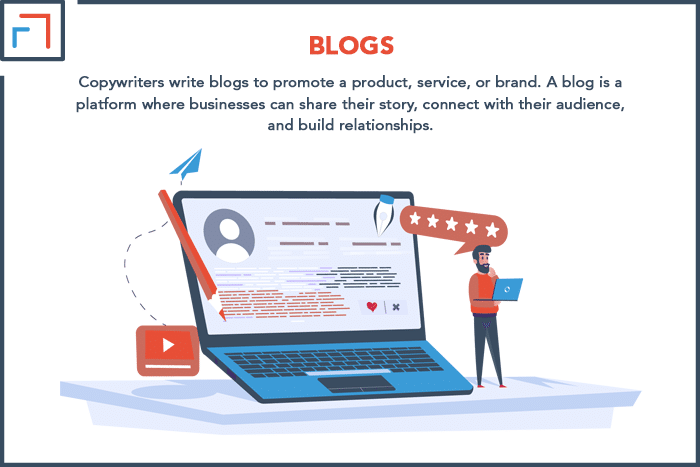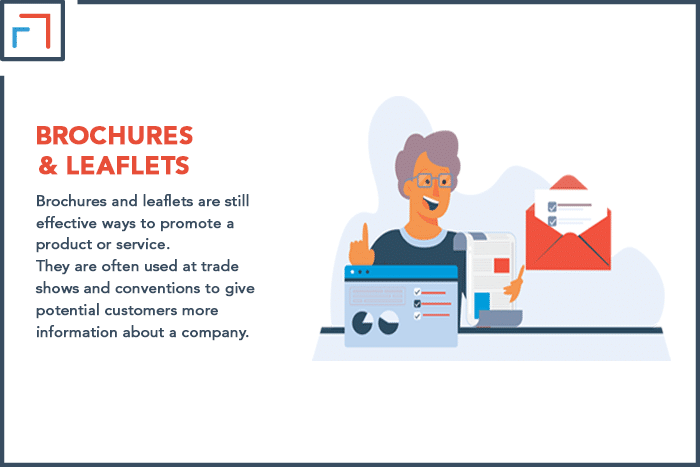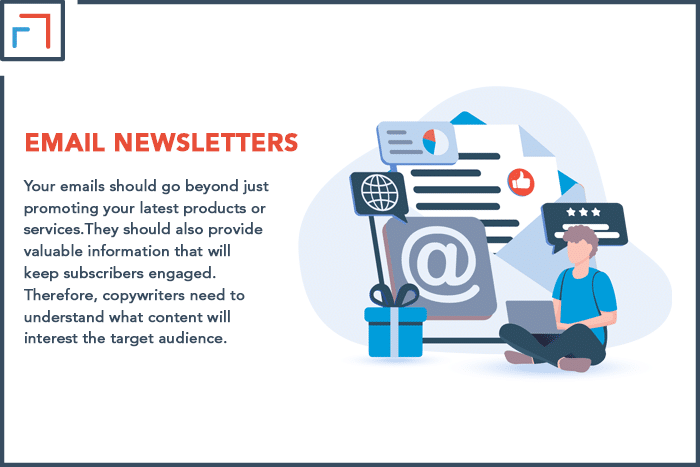The objective of copywriting is to persuade someone to buy something or create awareness about a service or product. After defining the primary goal, it’s easier to understand where copywriting shows up.
Copywriting is used in sales and marketing to promote a product or service. It can also provide information about important features and benefits. Copywriters also create brochures and leaflets to increase sales. Additionally, they write taglines and mottos to capture the essence of a brand.
But that is just the tip of the iceberg. Let’s explore each application in detail to help you understand where copywriting can be used.
Where Does Copywriting Appear?
The dynamics of businesses are rapidly changing, and so is the field of copywriting. The internet has drastically changed how we market and sell products or services.
Traditionally, copywriters wrote for print media, such as newspapers, magazines, and billboards. Nowadays, they write for digital media. This includes websites, blogs, email newsletters, and social media.
From a broad perspective, copywriting is used in sales and marketing, but there are many smaller niches underneath this umbrella.
1. Blogs
Copywriters write blogs to promote a product, service, or brand. A blog is a platform where businesses can share their story, connect with their audience, and build relationships.
A well-written blog post can generate leads, increase web traffic, and improve search engine rankings.
To achieve these objectives, copywriters use various strategies, such as SEO copywriting, to ensure the blog post appears on the first page of search engine results.
Copywriting blogs and content writing should not be confused. While a copywriter writes to promote and sell something, a content writer writes to inform. Let’s get this into perspective with an example.
A copywriter might write a blog titled “The Benefits of Using Product X.” On the other hand, a content writer would write an article titled “How to Use Product X.”
Although the two roles tend to overlap, the objectives are different.
Copywriters use persuasive techniques to get people to take action, whereas content writers provide information without directly trying to sell anything.

2. Press Releases
When was the last time you picked up a newspaper? For many of us, it’s been a while since we read the news in print. With the internet, we can get our news fix with a few clicks.
Copywriters play an important role in public relations by writing press releases. A press release is a short, formal statement that is sent to the media to generate publicity.
This type of writing aims to promote a product, service, or event. They are also used to announce changes or developments within a company.
Press releases are an effective way to generate media coverage and increase brand awareness. The key to writing a successful press release is to focus on the key message and make it newsworthy.
A good example is when a company like Apple announces a new product.
The press release would include key information, such as the product’s features and benefits, as well as quotes from the company’s CEO.
3. Brochures & Leaflets
With the advent of the internet, most businesses have turned to digital marketing. However, that doesn’t mean print media is dead.
Brochures and leaflets are still effective ways to promote a product or service. They are often used at trade shows and conventions to give potential customers more information about a company.
The primary objective of a brochure is to generate leads. Therefore, they need to be well-designed and persuasive. The copy should be clear and concise, with a strong call to action.
In addition, visuals play an essential role in brochures and leaflets. The use of images, graphics, and infographics can make a significant impact on potential customers.
One industry that still relies heavily on print media is the real estate industry. Property developers often use brochures and leaflets to market their latest projects.

4. Taglines & Mottos
A tagline is a short phrase that summarizes the key message of a company, product, or service. It’s often used in conjunction with the company’s logo.
A tagline must be catchy, memorable, and relevant to the company’s target audience. It should also be reflective of the company’s values and mission.
The best taglines are those that are simple and to the point. A good example is Nike’s “Just Do It” or McDonald’s “I’m Lovin’ It.”
A motto, on the other hand, is a phrase that encapsulates the philosophy or goal of a company. It’s not as short as a tagline and is often used in internal communications.
An example of a company motto is Google’s “Don’t Be Evil.” This motto reflects the company’s commitment to providing users with the best possible experience.
Although these might seem like simple statements, copywriters play a vital role in crafting them. A tagline or motto can significantly impact potential customers and will help solidify a company’s brand identity.
5. Social Media
The power of social media should not be underestimated. In today’s digital world, companies must have a presence on social media platforms like Facebook, Twitter, and Instagram.
Copywriters are responsible for creating engaging content that will capture users’ attention on different social media.
Understanding the platform and its audience is the key to writing compelling social media copy. Each channel has a different purpose and tone.
For example, Twitter is perfect for sharing short updates, whereas Facebook is better for longer-form content. Instagram is a visual platform, so images and videos are essential.
Creating relevant and engaging content is the key to success in social media marketing. Copywriters use their creativity and storytelling skills to craft content that will capture users’ attention.

6. Print Media
Print media is not as common as it once was, but it’s still an important part of many businesses.
Telling a story is often the best way to capture attention. It’s also important to be clear and concise, as people often skim through print ads.
The use of images and visuals can also help attract prospects. There is no doubt that working with print media is a challenge, but copywriters rise to the occasion and create effective ads.
7. Email Newsletters
Your emails should go beyond just promoting your latest products or services. They should also provide valuable information that will keep subscribers engaged.
The best email newsletters are informative and engaging. Therefore, copywriters need to understand what content will interest the target audience.
Including a mix of articles, videos, and infographics is often the best way to keep subscribers engaged. It’s also important to use a strong call-to-action (CTA) that encourages people to interact with your business.
Email newsletters are a great way to stay in touch with your subscribers and promote your latest products or services. But they can only be effective if they are well-written.

8. Sales Pages
When potential customers land on your sales page, they should be clear about what you’re offering and why they need it.
Think about it this way: your sales page is like a first date. You want to make a good impression and give them enough information to decide if they will see you again. Copywriters are like dating coaches.
They create compelling sales pages that make a strong case for your product or service. They understand the art of persuasion and know how to craft a compelling sales pitch.
A well-written sales page can be the difference between making a sale and losing a customer.
Key Takeaway
Copywriting is a vital part of marketing. It’s used in various forms of communication, from social media to email newsletters. The advent of digital media has only increased the importance of copywriting.
In the digital world, companies must have an active presence on social media platforms. There are various platforms, each with a different purpose and tone.
Creating relevant and engaging content for each one is the key to success in social media marketing.
